Their long silky hair, adorable puppy dog eyes, and beautiful billowing tails are begging to be pet, touched, and snuggled!
They seem to follow their owners everywhere. This breed is often nicknamed the Velco Breed, and for good reason. I wanted to dig deeper though and ask real owners what their experience is and if their Malteses really do love to cuddle as much as I think they do. Here’s what I found out.
Malteses do love to cuddle. They are one of the most affectionate small breed dogs. Out of 300 people surveyed 85% of owners said that their Maltese loved to cuddle with them. 8% liked little to no cuddles.
Why do Malteses love cuddling so much, who do they love to cuddle with and what about that small percentage that doesn’t like to cuddle? Is it something their owners have done, or is it their personalities? Is there anything you can do to encourage your dog to cuddle with you?
Keep reading to learn all the secrets!
Disclaimer: This post may contain affiliate links. We only recommend high-quality products that are used and recommended by real owners. If you use these links to buy something we earn a small commission.
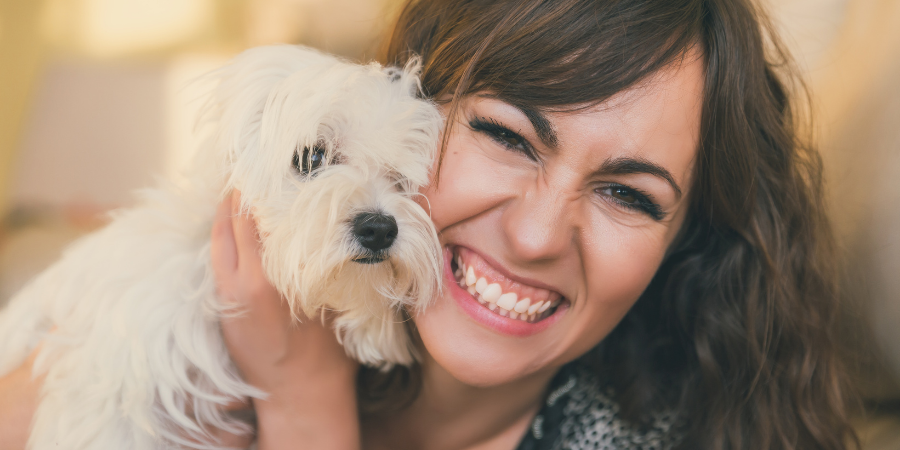
Are Malteses Affectionate?
Maltese were anciently bred as lapdogs for royalty. They can be found in portraits of many famous queens and noblewomen such as this royal woman with her beautiful Maltese in her lap. Because of their affectionate and loving nature, they made great companion dogs for royal women who were often left alone while their husbands attended to their duties.
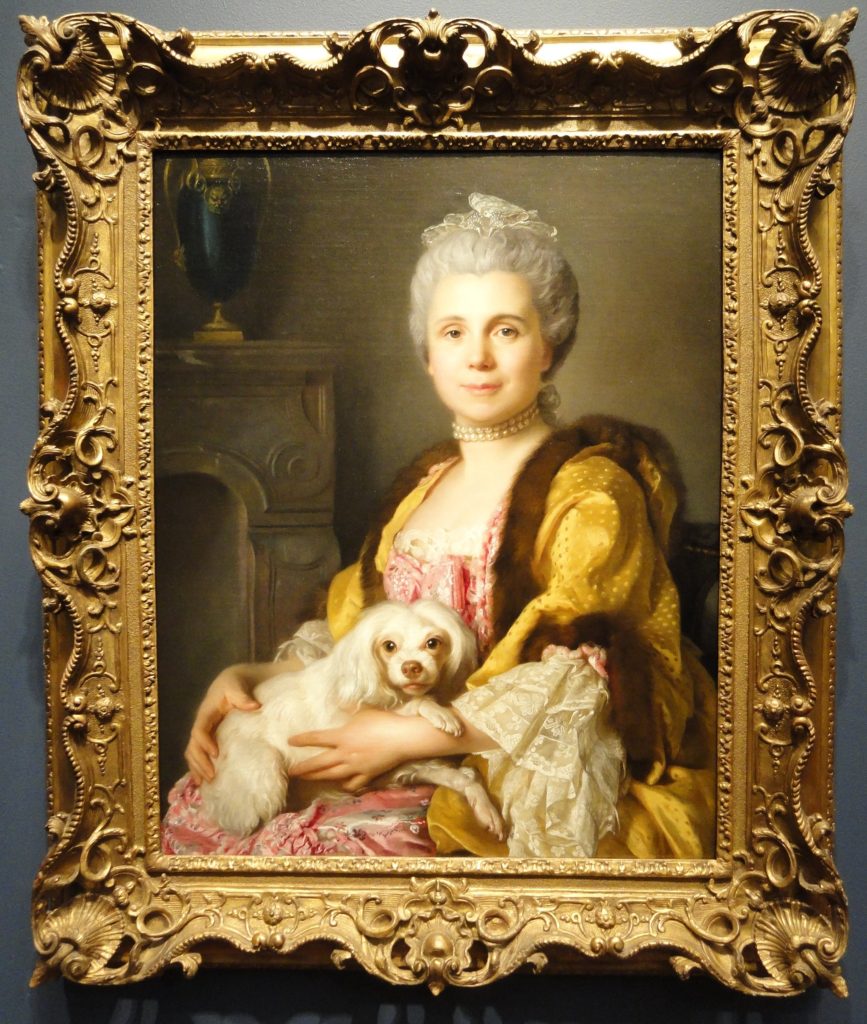
Maltese are very loving and affectionate dogs. I asked a group of Maltese owners how much their dogs liked to cuddle with them on a scale of 1-10 with 10 being the most cuddly to 1 being not at all and got some interesting results.
156 people said that their Malteses were a 10 on the cuddle scale and another 73 didn’t think 10 was high enough. They gave answers such as 100%, 1000+++, and descriptions such as my Maltese is always near me or in my lap!
Over 91% rated their Maltese 5-10 on the cuddle scale.
With that being said, those who said their Maltese didn’t care to cuddle rated them fairly even throughout the low numbers 9 people said 1/10, and 8 people said 2/10 only 1 person gave their Maltese a 0. Less than 9% of owners rated their Maltese a 3 or lower on the cuddle scale.
This loving affection has been so helpful for some owners that they have been able to train their Maltese to be a service or therapy dog. You can read more about that in this article. Can A Maltese Be A Service Dog? (Your Complete Guide)
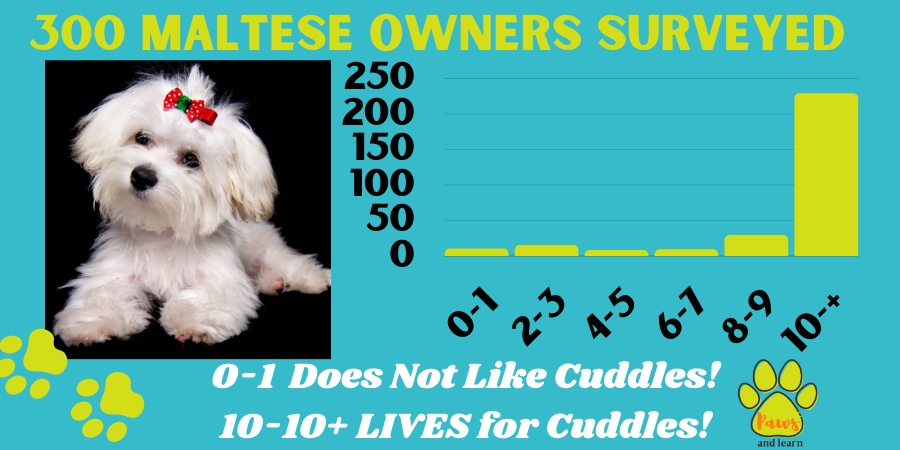
Why Maltese Like to Cuddle
When a Maltese has established a bond and trusts its owner then it is likely to show that trust and affection by wanting to be with and around its owner at all times.
Maltese in particular are so trusting and responsive that building a bond with them is fairly easy. This is one of the reasons that the Maltese breed is so cuddly and affectionate.
Maltese like to cuddle with their owners to show them love and affection and receive that love in return.
Science has proven (link to US National Library of Medicine Study) that when owners and their dogs are engaged in activities like cuddling and showing each other affection both of them receive a surge of Oxytocin, the hormone dubbed as the LOVE hormone. It makes both our little pooch and us feel happier, calmer, and loved.
Maltese cuddle for warmth. Since Maltese are on average only around 7lbs, and can oftentimes be even smaller, they can easily get too cold fairly quickly. It’s an instinct for any dog to find its pack and huddle up together for warmth when feeling too chilly, but especially so for the tiny toy Maltese.
Maltese Cuddle for Protection. Maltese are normally very playful and curious about their environment, but being so small they can be somewhat timid and may want reassurance that they will be protected.
When wanting to relax and get some shut-eye they feel a lot more comfortable about drifting off if they feel safe and secure while doing so. Again this is where instinct kicks in and the desire to turn to their pack or their Alpha for safety and protection.
Maltese cuddle because it’s instinct. Newborn puppies need to cuddle closely with their mothers as a way to survive. They need the life-giving milk that they provide as well as protection and warmth.
This survival instinct goes back to the beginning of time even before dogs were domesticated. as well as protection for themselves, they can also be somewhat territorial and protective of others in their family. This can lead your Maltese to bark or snarl when feeling threatened by any outside source.
It’s important that your Maltese is well trained and well socialized when they are young in order to avoid this trait in this breed.
Why Maltese Don’t Like to Cuddle
There are many things to figure when trying to figure out why your Maltese may not like to cuddle with you.
It could be too hot. Unlike us, our dogs can not sweat through their skin. The only way they can cool themselves off is through their nose and the pads of their feet, as well as panting. Because of this, they are much more sensitive to temperature changes. If it’s very warm your dog may be avoiding your snuggles because it doesn’t want that extra body heat.
They have been abused or had bad experiences in the past. For Malteses, that really don’t enjoy cuddling at all this is usually the most likely scenario! If you have a rescue or your dog has had negative experiences with cuddling others in the past then this normally loyal trusting breed could be struggling with trust issues.
It’s possible to regain its trust and have a strong bond with your dog, but it will take a lot of time and patience and they may not ever warm up to the idea of super close snuggle time.
Their personality will have a lot to do with whether or not they want to cuddle up to you. Some dogs are naturally more energetic and inquisitive and don’t want to slow down enough to relax and snuggle. Some dogs just prefer to have their space.
Your lifestyle and home dynamics can play a big part in whether or not your dog is super cuddly and affectionate. If as a puppy you spend a lot of time snuggling on the couch and holding your dog in your lap then it will naturally lead them to be more snuggly.
If you are a very active family and are on the go exploring and moving around a lot your dog will tend to follow your lead.
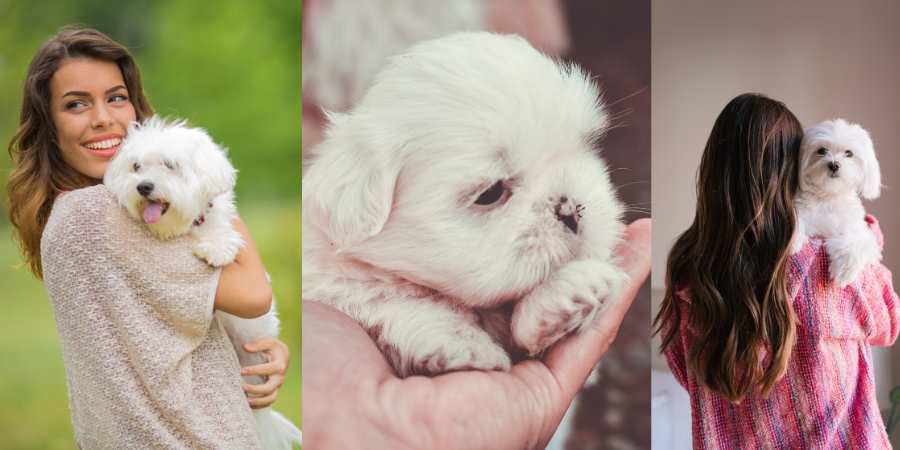
Can I Teach My Maltese to Cuddle
You can train a dog to do many things including learning how to lay down and sit still, whether that be in your lap on next to you it’s possible to help your dog learn to be closer to you and share some of the same space. However, you should never force your dog to cuddle with you or be more affectionate than it’s comfortable with.
It’s important to learn your dog’s cues and body language so that you can come to a mutually respected and beneficial agreement on what you would both like as far as cuddles go.
Most dogs do not like hugs in the traditional sense. It can make them feel agitated and stressed. Kisses and getting into your dog’s face can also be upsetting to them and possibly dangerous for you.
For some great tips on how to encourage your dog to cuddle with you check out this article I wrote called “Can I Teach My Dog to Cuddle.”
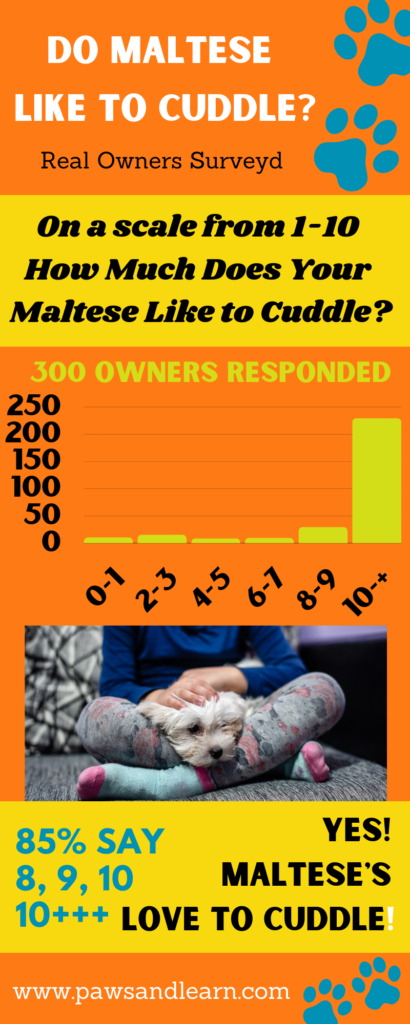
Are Maltese’s Clingy?
Yes, Malteses can be very clingy and have a hard time being separated from their owners. Maltese is often referred to as the velcro breed because they grow so attached to their owners and want to be constantly around them.
Maltese can easily develop very strong bonds with their owners. This is exactly what they are bred to do (check out my article “What are Maltese Bred for? Their Superpowers Revealed).
For some, this behavior does not bother them at all and they find it very endearing. They may refer to it as being very cuddly instead of being very clingy.
It’s also important to note that there is a difference between your dog being clingy and your dog having separation anxiety!
Clingy
- They want to be around you all the time, but they don’t panic when you are not there.
- They may cry or howl for a few minutes when you leave, but then are able to calm themselves down.
- They may want to chew on a favorite toy or bully stick, but don’t chew on other things they aren’t supposed to.
- They can hold their bladders for a reasonable amount of time and don’t have accidents unless you’ve been gone over several hours.
- They are able to sleep or eat when left alone.
Separation Anxiety
- They panic when you are not around.
- They cry, bark or howl for more than a few minutes, sometimes hours or more. They struggle with finding ways to calm themselves down.
- Your dog is destructive when you are not around. Chewing things up and destroying things.
- They pee or defecate whenever they are left alone.
- They won’t sleep, or eat, or drink, but instead, constantly pace back and forth and watch the door or the window for your return.
Clinginess can easily turn into separation anxiety if the behavior is not monitored carefully or if it is reinforced. If you are dealing with separation anxiety this article from the ASPCA may help.
If you feel like your Maltese being clingy is too much and you want your dog to learn more independence there are some things that you can do to help. Of course, it will always be easier to set patterns and routines when they are puppies, but it’s never too late to try and help them gain some independence.
You can start by choosing a time each day when you feel like you can work on this skill with your dog. Start with very small amounts of time and work up to more, eventually, you can add this routine to twice a day or more.
- Teach your dog to obey the sit and stay, or lay down and stay command. It’s helpful if you teach them to lay down and stay in a comfortable place like their bed. Slowly increase the amount of time that they need to stay before you give them a tasty reward. (I used boiled bits of chicken for my dog Bear).
- Work on getting them to lay down and stay in their special place while you get farther and farther away and even move out of sight. (Your dog won’t last very long at first so make sure to reward right away and only add increments of time very slowly so that he can be successful 90% of the time in what you are trying to teach him.
- Once you can consistently move out of sight and get your dog to stay in their bed for about a minute or two, start by rewarding them with a food toy like this Kong stuffed with yummy grub, or bully stick (these are the ones we use with our dog Bear). Something that will keep them busy and occupied for a while. Then give that to them as a reward for staying put. Take it away if they get up and follow you.
Other tips:
- It helps if they are well exercised and tired before you try and get them to have some independent time.
- Remember to be patient and don’t expect too much at once.
- Don’t make a big deal about when you leave or come home. (This one is super hard for my kids, as they are always so excited to see our little dog Bear whenever we’ve been away.)
- Help him associate you leaving with good things. For example when you pick up your keys and he hears that jingle give him a treat. Practice going to the door as if it’s no big deal, and when they don’t pay attention to you or at least aren’t getting overexcited, reward that with a treat.
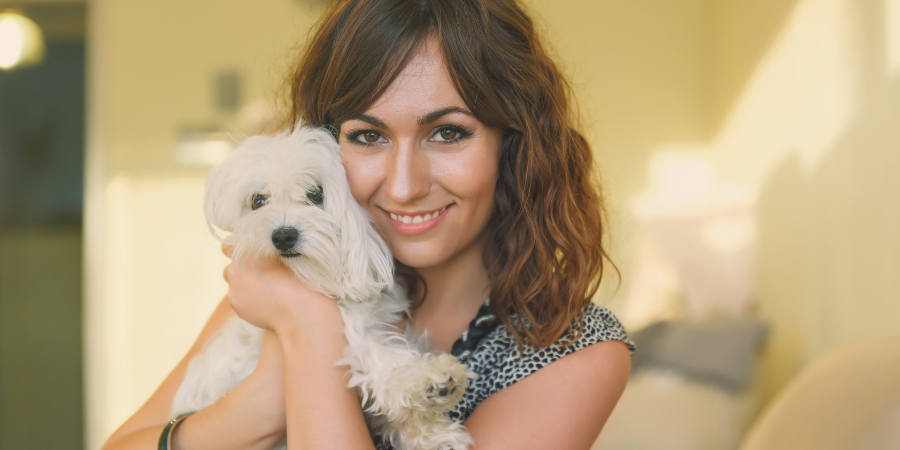
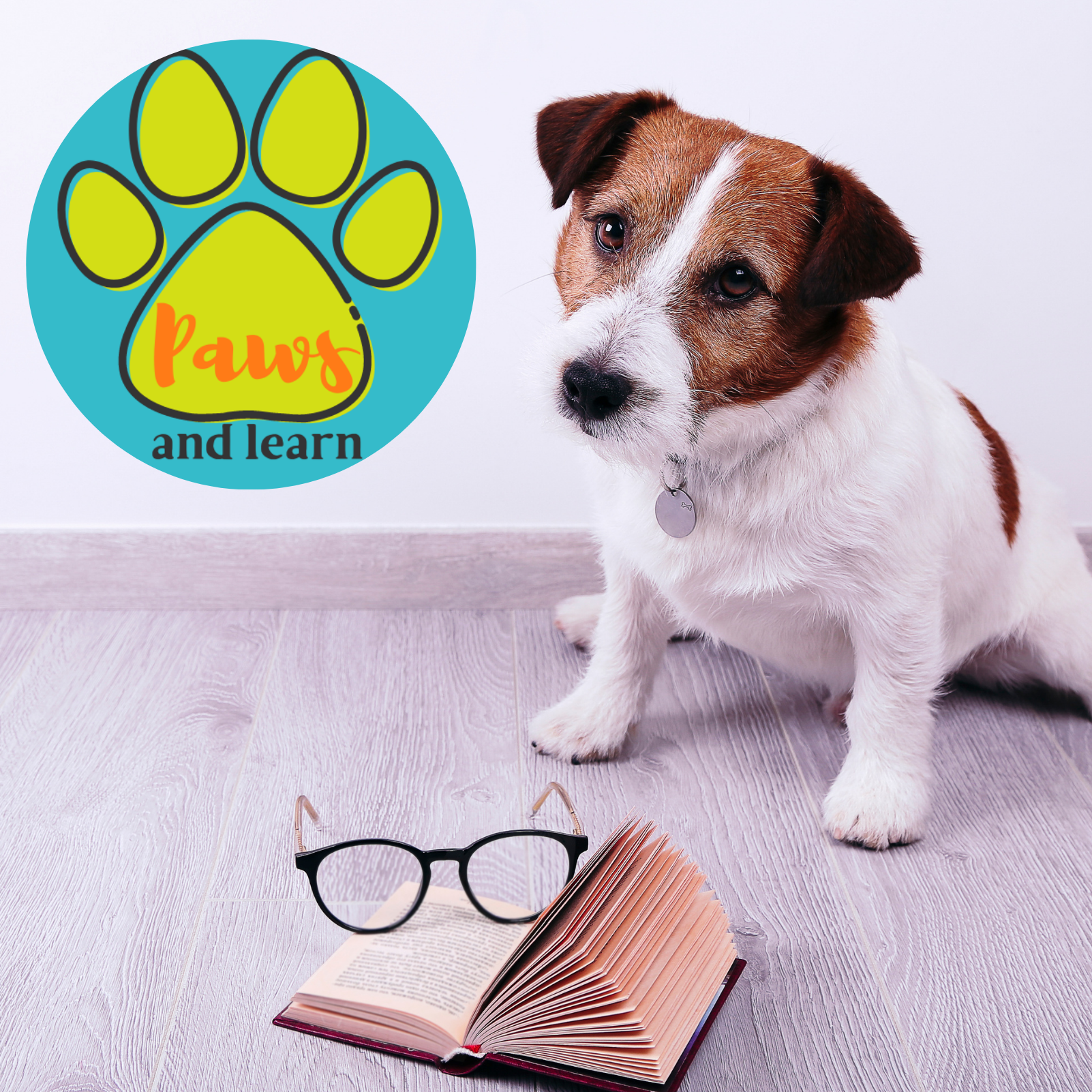

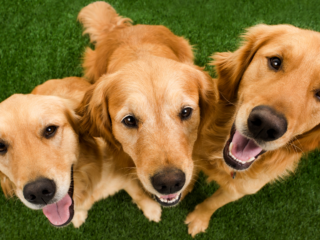
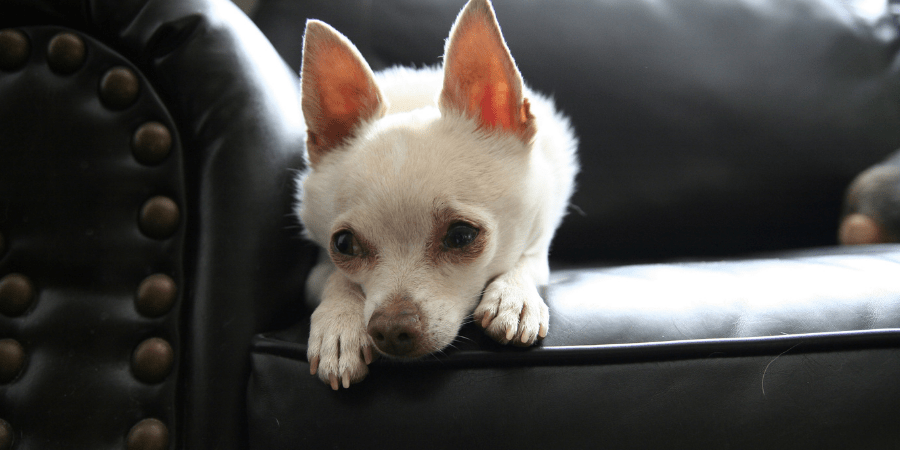
Should I Let My Maltese Sleep With Me? | Paws and Learn
Saturday 20th of February 2021
[…] and to tell you the truth, I kinda love it. One of my favorite things about Maltese’s is how much they love to be with you and cuddle! If you are worried about your little guy having separation anxiety teaching him to sleep in his own […]